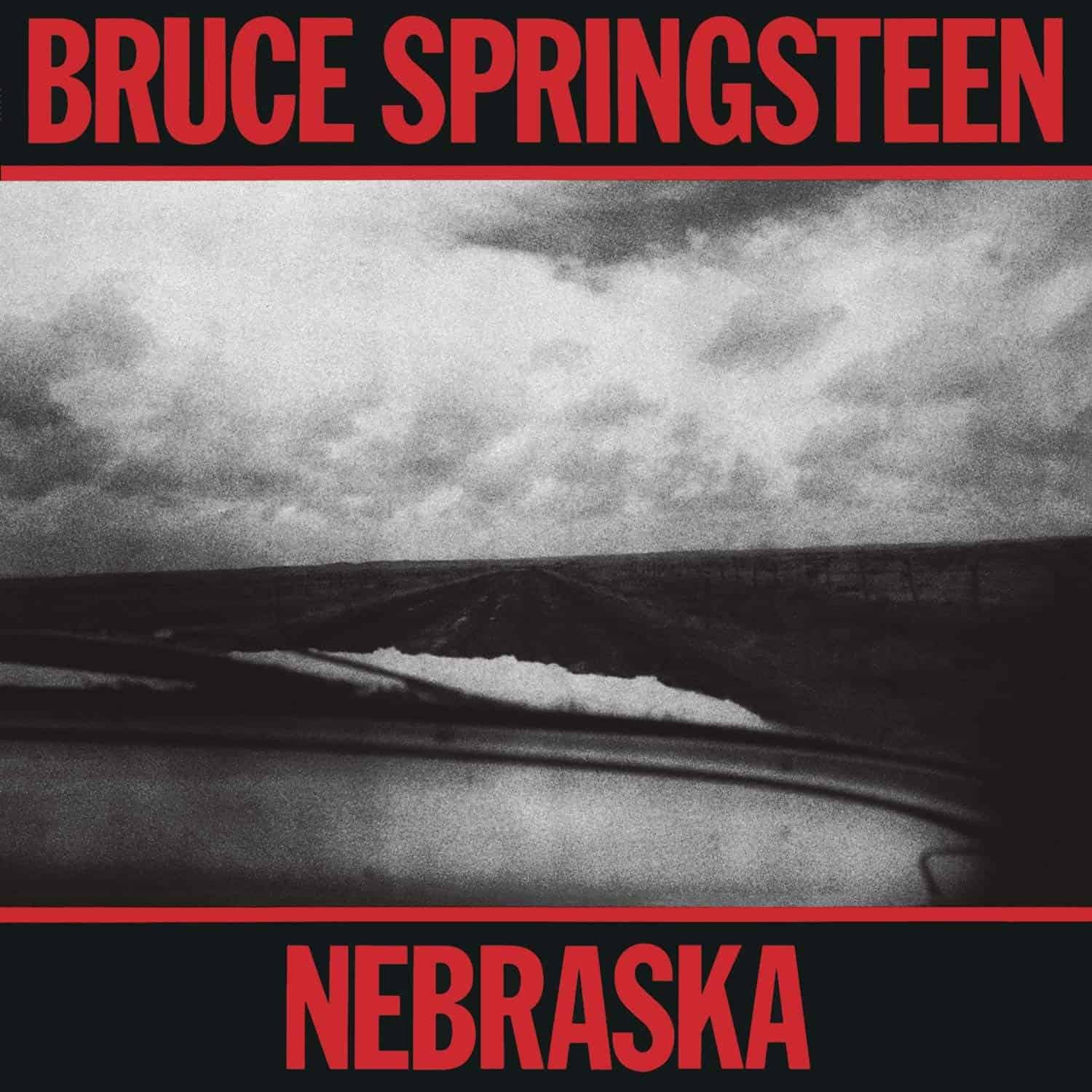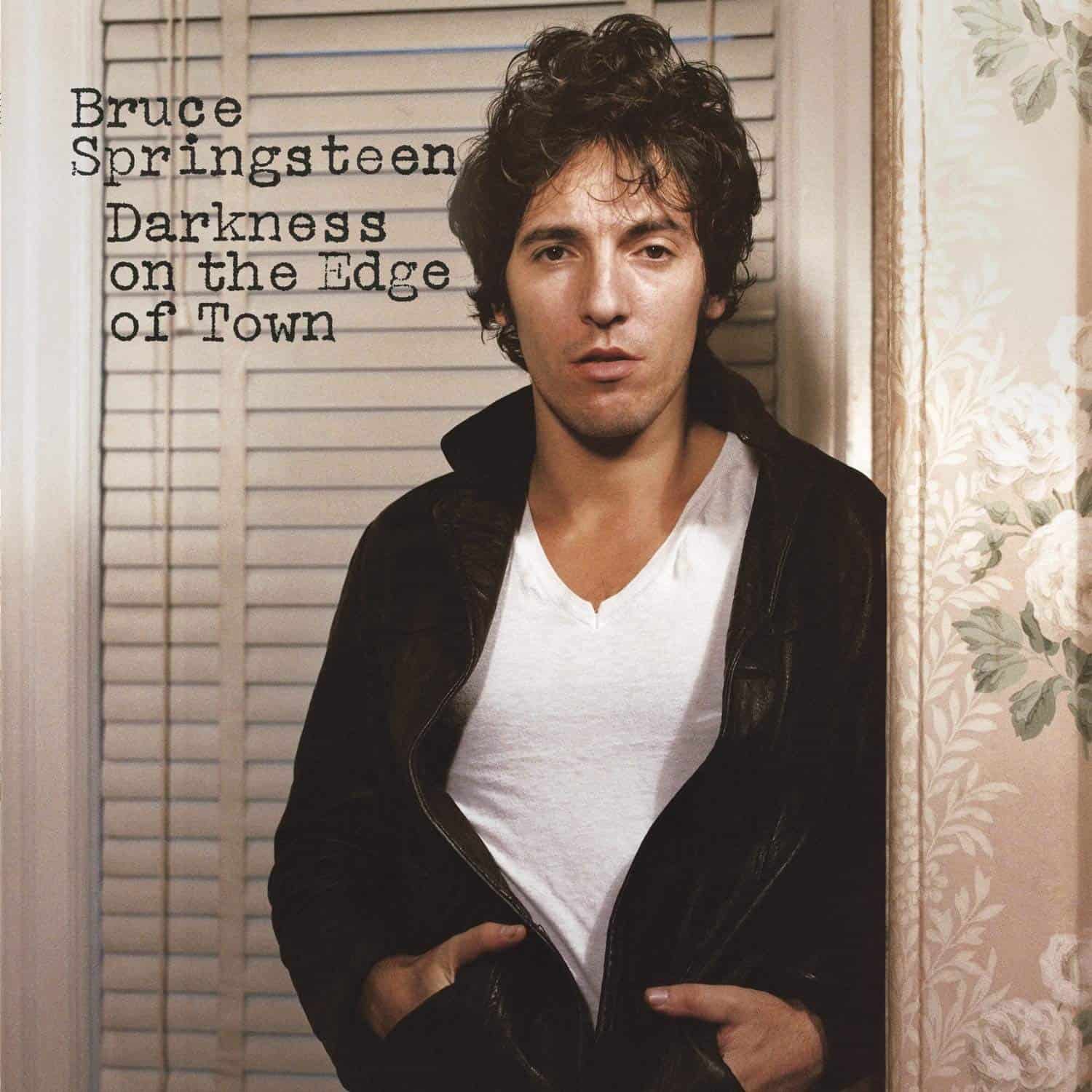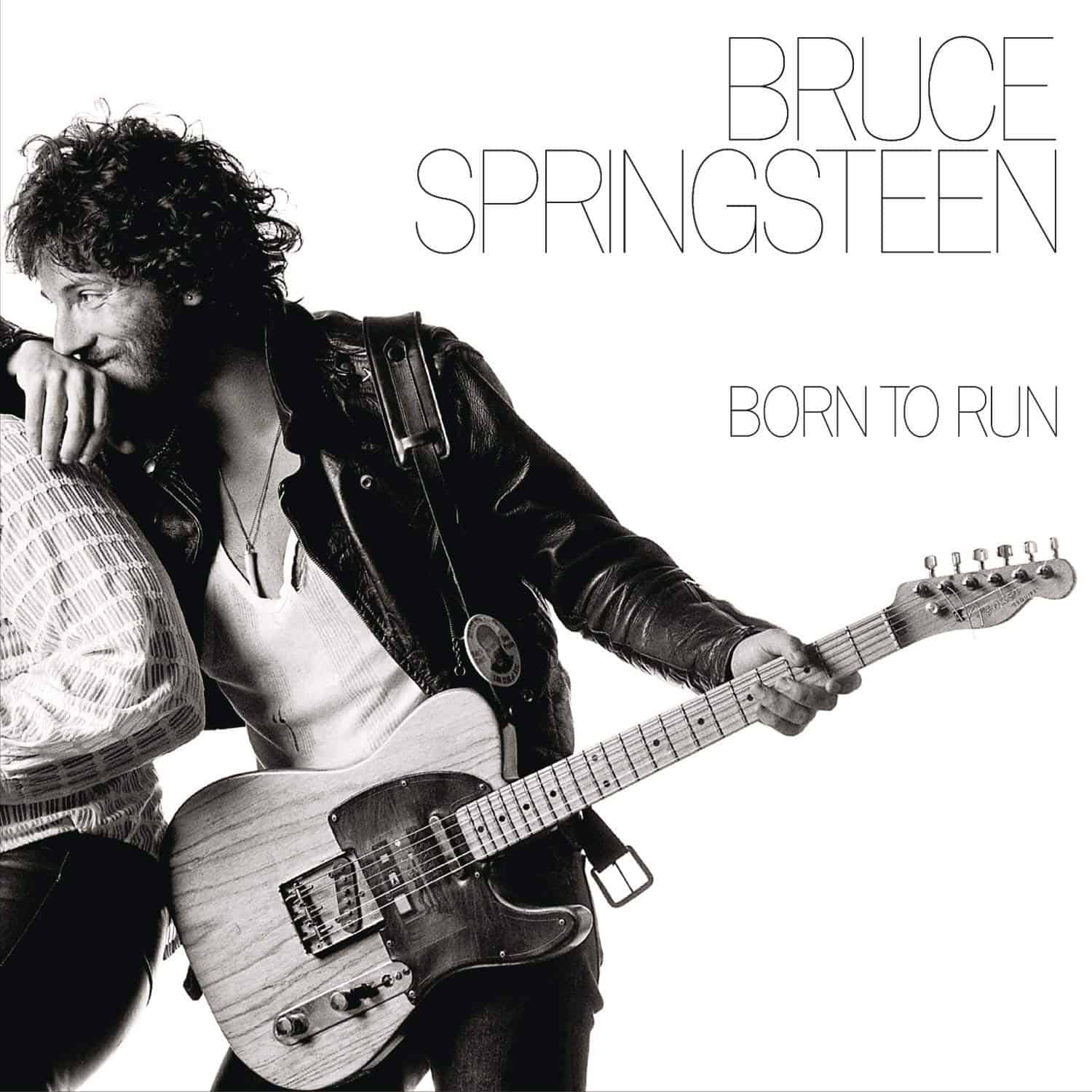Marketplace
2014 Sony Legacy Recordings PRESSING
- RPM 33 ⅓
- Audio Stereo
- Catalog Number 888750141551BK1
- Release Year 2014
- Vinyl Mastering Engineer Robert Ludwig (lacquers cut by Chris Bellman)
- Pressing Weight 180g
- # of Disks 8
- Vinyl Color No
- Box Set Yes
- Jacket Style Other
Bruce Springsteen didn’t become a star overnight. His debut, Greetings from Asbury Park, N.J., was lauded by rock critics, especially Peter Knobler, whose profile of the Boss in Crawdaddy magazine was prominently featured in ads promoting the album. Springsteen’s second effort, The Wild, the Innocent & the E Street Shuffle, also received critical praise but netted only modest sales. By the time the singer/songwriter/guitarist released his third LP, Born to Run, he had built a rabid fan base by relentlessly touring and developing a dynamic, exciting stage presence. Rolling Stone critic Jon Landau caught a show and wrote a glowing piece in the May 22, 1974 issue of Boston’s Real Paper that included the now-famous quote: “I saw rock and roll’s future and its name is Bruce Springsteen.” Landau came on board to help produce Born to Run, which became Springsteen’s first hit record upon release in August 1975.
The Album Collection Vol. 1: 1973-1984 traces Springsteen’s career from the aforementioned albums through the enormous commercial success of 1984’s Born in the U.S.A. Bob Ludwig remastered the recordings for vinyl using the Plangent Process, which corrects anomalies (such as wow and flutter and distortion) in tape playback. It all results in a high-resolution digital file, which Chris Bellman used as the source for cutting the lacquers for the set.
Springsteen recorded Greetings from Asbury Park, N.J. at 914 Studios, an inexpensive spot in Blauvelt, New York. It stands up as a strong debut that would have benefitted from better sound. “Growin’ Up,” “Spirit in the Night,” and “It’s Hard to be a Saint in the City” remain concert staples and the album contains other notable tracks, including “Blinded by the Light” and “For You.”
The new pressing tones down the bright edginess that makes the original somewhat fatiguing, and expands and deepens the sound so that the background vocals are better demarcated and Garry W. Tallent’s bass cleaner and tighter. David Sancious’ piano feels warmer and more resonant throughout, and Springsteen’s acoustic guitar is easier to pull out of the mix on “Growin’ Up” and “It’s Hard to be a Saint in the City.” “Spirit in the Night” feels richer, with small details, such as the congas in the left channel and the background vocals, getting more space to stretch out. Overall, a significant improvement over the original, which now sounds one-dimensional.
Springsteen returned to 914 Studios for The Wild, the Innocent & the E Street Shuffle, which reflects more confident songwriting. “4th of July, Asbury Park (Sandy)” reinforces his Jersey Shore romanticism, and the songs on the second side—“Incident on 57th Street,” “Rosalita (Come Out Tonight),” and “New York City Serenade” serve as terrific examples of his storytelling ability, which he further developed with live versions of the material.
The new pressing centers Springsteen’s voice and brings it forward all the while opening up the horns on “The E Street Shuffle” and “Kitty’s Back,” making them more harmonically detailed and textured. Springsteen’s guitar on the latter track remains razor sharp but less glassy, and his rhythm guitar throughout the set comes on with more authority. The piano on the opening of “New York City Serenade” is larger-sounding and more impressive, and the acoustic guitar lead and chord strums resonate with more openness. “4th of July, Asbury Park (Sandy)” now seems more evocative of a warm summer night on the boardwalk, and “Rosalita” rocks with more depth and conviction. This pressing reveals Springsteen’s second album to be more nuanced and subtle than suggested by the original LP—and even shows drummer Vini “Mad Dog” Lopez to be a more skilled, sensitive player.
For Born to Run, Springsteen and his co-producers, which by then included Landau, moved to the higher-budget Record Plant and created a more layered and complex album. “Backstreets” and “Jungleland” retain the sweeping romanticism of the previous album, but “Tenth Avenue Freeze-Out” and “She’s the One” hint at the tighter songwriting that would come in later records. Born to Run took 14 months to make, with a large portion of the time devoted to the title track. Heavy touring built Springsteen’s fan base, and the record became a hit.
Springsteen’s voice is more three-dimensional on the new pressing and instruments better separated. Roy Bittan’s piano has a more pronounced albeit still-subtle force on “Thunder Road” and rocks solidly on “Tenth Avenue Freeze-Out.” Horn arrangements on are also more fleshed out and powerfully rendered. The title track, recorded at 914 Studios and endlessly fussed over, sounds vastly better on the reissue. Piano and glockenspiel come through with ample strength, the guitar possesses more tremolo, Springsteen’s voice seems more emotionally involving, and Clarence Clemons’ sax arrives with extra impact. Compared to an out-of-print Columbia Masterworks pressing (bright and sibilant) and a Classic Records pressing (very good, a bit dark but spacious and forceful), the new pressing stands as the most definitive and well-balanced version of the iconic record.
A long legal battle led to a three-year gap between Born to Run and its follow-up, Darkness on the Edge of Town. The songs on the latter are more pointed and express Springsteen’s concerns about the lives of the working-class people with which he grew up. Cars and rock n’ roll still have the power to liberate, but give just brief respites from dreary jobs and difficult lives. The album always featured good sound, but Max Weinberg’s drums on “Badlands” on the new pressing are more emphatic and focused, with the toms reaching deeper and sustaining longer. Similarly, the guitars cut through with added authority and clarity.
Indeed, Springsteen’s guitar on “Adam Raised a Cain” hits hard, but on the reissue, the overtones on his lead are even fiercer and the piano and rhythm guitar placed behind him and in support. “Racing in the Street” proves more haunting and emotionally gripping, with Springsteen’s voice closer and more intimate, and Bittan’s piano notes claiming a softer edge even as they still establish the atmosphere. The rockers slam, but their sound is more enveloping and immersive. Ballads are more dynamic, and entire album benefits from details that enrich the music, from clearer tremolos on guitars to tambourines to backing vocals being better focused and more sharply etched. This is a sensational-sounding pressing.
While the double-album The River was recorded in analog in New York at the Power Station, it was digitally mixed at Capitol Records in California. It’s doubtful Ludwig needed the Plangent Process for the reissue. Audiophiles have never been fans of The River, distinguished with an emphatic top end and somewhat aggressive presentation. The first time I played the new pressing, I missed some of the excitement of the original. But Clemons’ sax on “The Ties That Bind” now reveals itself as more compelling and timbral, with the guitars less piercing and richer, and Weinberg’s drums more natural while still packing plenty of punch. “Sherry Darling” benefits from the additional space, which gives the band’s shouts more room to create a livelier party atmosphere. “Two Hearts” integrates the instruments into a more coherent whole. The rockers are also vastly improved via a toned-down top end and decreased digital reverb, yet I still tend to want to lift the needle on the dud “You Can Look (But You Better Not Touch).”
The reissue really shines on “Independence Day,” “The River,” and “Stolen Car”—slower songs whose beauty and sincerity are ever more apparent. It’s easier to hear the careful construction of Clemons’ solo on “Independence Day” and how skillfully he uses dynamics. “The River” reaches deeper because Springsteen’s singing is more expressive. Most importantly, you can now listen to The River without feeling weary midway through the third side. This reissue is more spacious, less bright, and uses a lighter touch on the various effects.
I remember reading about Nebraska, buying it upon release, and still being surprised that Springsteen chose to do an all-acoustic album. Recording on a Tascam four-track cassette machine, he created a simple, deeply affecting record. The reissue brings me a step closer to the music, lifting a veil to put Springsteen’s voice into the room with me and expanding the soundstage to unearth the details of the overdubbed guitar arpeggios on the title track. The guitar on “Atlantic City” sounds more open and sonorous, and Springsteen’s overdubbed backing vocal more striking.
In addition, the stories on Nebraska come alive like never before because Springsteen’s voice is much more intimately presented. The slight amount of delay added to his singing gives a track like “My Father’s House” the feeling of a tale told from a distant past. The faint harmonica in the background of “State Trooper” makes the song more tragic and haunting. Hard-to-hear details on the somewhat muffled original, such as the tambourine tap on “My Father’s House” and subtleties of Springsteen’s acoustic guitar playing, are now parts of a fully imagined set of short stories about post-war America and the people who, during the 80s boom years, got left behind.
Admittedly, I approached the new pressing of Born in the U.S.A. with trepidation. The original pressing stamped the effort as Springsteen’s stadium album, with loud 80s production that pushes the drums into your lap and uses synths that immediately dated the affair. But man, is it filled with great rock n’ roll.
The synths on new pressing still feel outmoded, but less insistent and intrusive, and Weinberg’s snare drum on the title track sounds more real and less electronic. The instruments aren’t as forward, so Springsteen’s voice has room to register. The Boss’ guitar on “Cover Me” still stings, but the other instruments, especially Tallent’s bass, get more room to catch your ear. And “Working on the Highway” comes across with a more vintage, slap-back rockabilly vibe.
On “No Surrender,” the clearly distinguished background vocals and less-crowded sound give Springsteen’s voice more focus, take the track out of the 80s, and make everything timeless. Each tune benefits from a more spacious presentation and less digital reverb, along with a reined-in top end. For example, “Bobby Jean” sounds closer to the 60s fare that inspired it and “Glory Days” is much more enjoyable via the nuanced presentation. I’m more likely to return to Born in the U.S.A. because of the much-improved mastering.
Visually, the box housing The Album Collection Vol. 1: 1973-1984 mirrors a worn instrument case complete with “affixed” tour stickers and backstage passes. The LPs are held in better-than-original-quality sleeves and accompanied by a 60-page, LP-sized book of photos and articles from Springsteen’s early years.
The individual record covers recreate the cover art and inner sleeves of the originals, down to a reproduction of the sleeve included with Greetings from Asbury Park, N.J. that promotes other Columbia Records artists. Cover art is directly printed on medium-weight covers. While The Wild, the Innocent & the E Street Shuffle originally featured a tipped-on, heavier-weight cover, the art reproduction throughout the box ranks as very good.
The vinyl pressings, by MPO in France, are also very good—flat and quiet. I began listening to the set feeling I really didn’t need to replace my earlier pressings. By the time I finished my evaluation, I realized I very much wanted to hear the reissues again.
The Album Collection Vol. 1 1973-1984

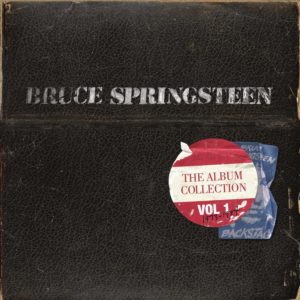
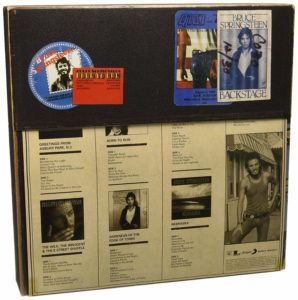
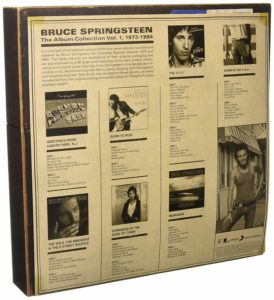
 4
4
